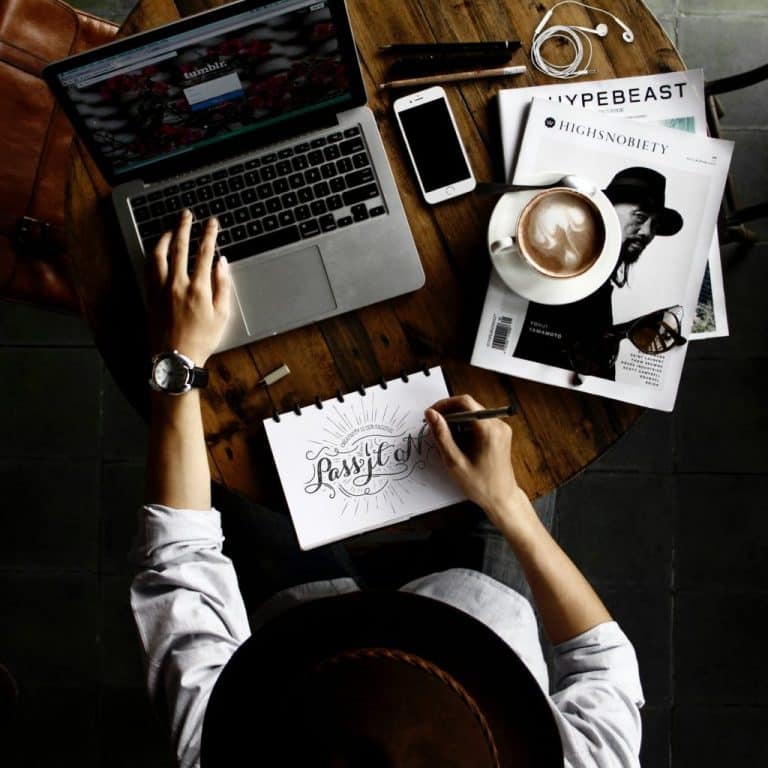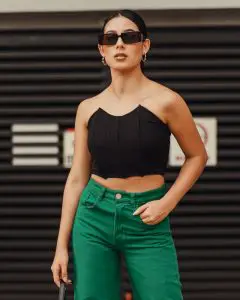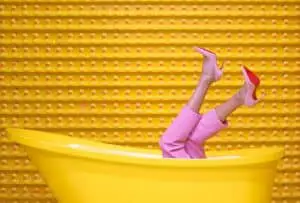Introduction
A career in fashion can range from a simple marketing role for a retailer to a corporate career with a leading brand. Depending on your career choice, you may need to do more than just submit a resume and depend on existing retail experience. You will need to network, gain experience from the ground up, and consider a few other tips to support you along your chosen career journey.
The thought of embarking upon a top career in the fashion industry can seem daunting. It is often portrayed as exclusive and hard to succeed. But fear not: there are several well-paying jobs in the industry that can roll into six-figure salaries with a little hard work and determination. We’re going to cover 11 jobs that have a six-figure earning potential and the best practices for matching your passions with profit. Let’s get started!
1. Visual Merchandiser
2. Fashion Sales Representative
3. Garment Technologist/Quality Assurance Manager
4. Creative Director
5. Design Director
6. Public Relations Specialist
7. Fashion Illustrator
8. Fashion Buyer
9. Trend Forecaster
10. Sustainability Officer
11. Fashion Photographer
12. Conclusions
1. Visual Merchandiser
Are you drawn to fashion department stores? Do you look forward to seeing the new collections displayed in the storefront window? If yes, working as a visual merchandiser may be for you!
Visual merchandisers are specifically tasked with designing, developing and introducing in-store displays and other graphics to ensure that shoppers are drawn to trying on the items in the store. Some other common responsibilities of visual merchandisers include:
- Creating and maintaining numerous multimedia presentations
- Offer effective advertising ideas to boost retail earnings and revenue
- Constantly conceptualize new and fresh concepts for retail architecture
- Maintain an ordered, attractive and friendly atmosphere for shops
- Create striking tactics for promotion and advertisement
- Coordinate with producers, distribution representatives and vendors
In general, responsibilities related to visual displays, inventory management, store merchandising, product marketing, fashion distribution are managed by a visual merchandiser.
This career path can start with a position as a visual merchandising assistant and then progress to the position of visual merchandising coordinator or director. You’ll likely need training in design and marketing and work experience in retail. While some positions require a bachelor’s degree in design or related fields, some visual other positions only require an associate degree.
2. Fashion Sales Representative
Fashion Sales Representatives market the clothes and accessories of a manufacturer to fashion customers from wholesale and retail companies. Sales representatives typically seek out orders within a specified geographical region from existing and potential segmented clients. They show sketches, photos, and catalogs of the product line of their manufacturer, and must be able to address any product specific questions. Below are additional responsibilities a fashion sales representatives may take on:
- Market clothes, shoes, and other apparel items from wholesale and retail outlets to apparel buyers
- Present the company’s product range of samples, catalogs, and drawings
- Manage customer product inquiries
- Acknowledge and handle product issues
- Coordinate product launch events
Employers usually search for apparel sales managers who have good advertisement and marketing expertise. But apart from that, they should also have broad awareness of emerging trends in fashion. Above all, an effective fashion sales rep must be able to effectively reflect the business value to its customers.
3. Garment Technologist/Quality Assurance Manager
There are several less well-known roles in clothing production other than those that handle products after they hit the shelves. One of these positions is known as Garment Technologist, or commonly referred to as a Quality Assurance Manager. Garment technologists ensure the seamless development and quality of a finished product.
As fashion firms continue to outsource manufacturing to other nations, textile technologists will always be needed. They serve as the communicator between brand and manufacturer, are responsible for ensuring that the expectations of stakeholders are met.
Some of their roles include working closely with designers, pattern cutters and graders, as well as assisting purchasing teams throughout all phases of production process, from original concepts all the way to manufacturing.
Among other tasks, garment technologists also:
- Give guidance on appropriate materials to use
- Recommend improvements to designs
- Guarantee that garments can be made to target budget
- Use methodologies such as lean manufacturing and continuous improvement.
If you’re interested in becoming a quality assurance manager, one of the first things to consider is how much education you need. According to Zippia, about 45.8% of quality assurance managers have a bachelor’s degree while 22.2% have master’s degrees.
4. Creative Director
Creative Fashion Directors are responsible for the conception, design, and on-brand execution of all visual print and digital materials for the company. They manage multiple editorial projects and deadlines, and when required, provide conceptual direction on relevant co-branded projects. The creative director, in collaboration with other senior members of the work team, direct cover and fashion shoots.
- Lead creative sessions for project kick-offs
- Manage multiple projects from concept through completion
- Work with the account, strategy, and copywriter teams to develop concepts and present to upper management
- Establish creative direction within a company
- Oversee and inspire the creative team of vendor partners; generate numerous ideas for a campaign or project
A creative fashion director likely needs to have a mixture of formal education and marketing experience. Many employers prefer to take on directors with bachelor’s degrees in advertising, marketing, or journalism. Classes in sales, visual arts, psychology, art, technology and communication are valuable for this position as well.
5. Design Director
Fashion Design Managers/Directors are responsible for giving design direction for the fashion season, attending overseas sourcing trips, and training and managing a team of fashion Designers. Fashion designers work for designer labels, as part of in-house design teams for retail chains, and for clothing manufacturers.
The responsibilities of a Design Director may include:
- Making sketches by hand or on the computer
- Developing patterns
- Overseeing production
- Analyzing trends in fabrics, colors and shapes
- Assigning tasks to other senior designers and everyone below them
Some fashion designers work across the full spectrum of clothing, while others choose to specialize in specific categories, such as menswear, sportswear or formalwear.
Entering a career as a design position is likely to require a bachelor’s degree, but a graduate degree could be useful if one is interested in progressing to a management/director role. These professionals may consider obtaining a degree in any art or design-related major and then pursuing 3-5 years of experience in other design-related jobs before being employed as design directors.

6. Public Relations Specialist
Public Relations Specialists help forward a brand’s objectives and establish their positioning through press-related activities . Fashion PR jobs entail creating and maintaining relationships with media personnel including stylists, editors at magazines and newspapers, and website content creators. This includes:
- Writing press releases
- Conducting conferences
- Launching innovative campaigns
- Regularly interacting with the media
Fashion publicists are responsible for communicating with the public as problems or crises occur from outside outlets, further emphasizing the need to maintain a close working relationship with media staff.
Employers offering fashion PR jobs are searching for applicants with journalism experience, exceptional written and oral writing and presentation capabilities, and good time management and multitasking skills. A 4-year degree in Public Relations or related field has become increasingly required and coursework in fashion and journalism is very useful.
7. Fashion Illustrator
With the assistance of traditional and modern media, fashion illustrators work very closely with fashion designers and art directors to create artistic, special and innovative visual images. They are effectively charged with making eye-catching sketches aimed at capturing the interest of the purchasing public for a collection. Computer-aided designers use computer software to create sketches of designs
It is important that you are up to date with the latest fashion trends in order to become a professional fashion illustrator. In addition, based on the innovative and imaginative framework of the fashion designer, you must be able to accurately make sketches and illustrations of clothes, boots, shoes and other fashion apparel that fits their vision.
For both computer and hand illustrators in the fashion industry, a bachelor’s degree in fashion design, fashion merchandising, fine art with a computer-aided design focus, or just computer-aided design, is typical. Many employers favor applicants with solid experience in the industry.
8. Fashion Buyer
Fashion buyers handle the collection and procurement of clothes and accessories from designers, suppliers or wholesalers for retail sale. Buyers use their fashion sense, experience in trends, and knowledge of preferences of their target consumers to produce an enticing range of products for retail outlets.
They essentially oversee the production of merchandise aimed at a specific market and price point. Depending about how large the business is, there may be a fashion buyer or a team of fashion buyers responsible for the clothing the business will offer.
A college degree in Fashion Merchandising or a related field is usually required. Coursework in Business and Fashion Design is very helpful to enter the fashion buying career. You may start out as Assistant Fashion Buyer, then move to Fashion Buyer, and potentially a Divisional Merchandise Manager.
9. Trend Forecaster
To predict fashion patterns, Fashion Trend Forecasters use their own understanding of the fashion market, study data, and observational skills. This knowledge is regarded by retailers, artists, advertising organizations, sponsors, and other sectors to be an invaluable instrument to better measure what will be popular in the upcoming seasons.
Some examples of responsibilities of trend forecasters include:
- Establish competent presentation boards with trends that discuss trends, counter-trends and sub-trends
- Analyze knowledge and phenomena as they are linked to consumer identity
- Extend and challenge apparel entrepreneurial trends, awareness and practices
- Validate and apply relevant analysis methodologies to understand global patterns
- Explore new challenges and respond strategically to their effect on the fashion industry
Fashion forecasters are some of the best paid in the industry. Simply because their work extremely valuable for determining the success of a collection.
Many employers favor candidates with a degree in apparel design, fashion merchandising, garment manufacturing, apparel design, apparel merchandising, fashion marketing or fashion retail. For the majority of aspiring fashion forecasters, spending a few years working in the industry gaining experience before earning a salary position is common.
10. Sustainability Officer
The collection of raw materials for supplying, refining, producing and shipping for sale to multinational retailers requires sustainability tests and compliance with environmental and health regulation.
By understanding the environmental impact at each stage of the supply chain, a Sustainability Officer suggests actions that will improve outcomes and working conditions for products and fashion industry employees. The overall target goal for a sustainability officer is to help the business reap the majority of its profits from products that address environmental and social issues.
Sustainability officers also:
- Analyze and predict a company or institution’s future outlook
- Present stability and environmental impact reports
- Sets policy, goals and objectives to assure that the corporation maintains and even exceeds productivity and profitability
- Ensures company is meeting or exceeding environmental policy regulatory standards
Sustainability Officers usually have an engineering degree background and 5-7 years of field experience.
11. Fashion Photographer
Fashion Photographers concentrate their talents primarily on fashion designs and personal imagery. They capture and create images of models, environments, and objects using a range of cameras, photography equipment, computers, and picture processing software. Photographs are used to market new collections, promote styles, and publicize designers in both print and digital forms.
Fashion photographers may also have some of these responsibilities:
- Take images of the models according to the brand’s specifications
- Be willing to work with studio lighting to accentuate the best features of the models
- Build a strong relationship with models to make them feel comfortable with the camera
- Produce exclusive, innovative and imaginative photo fashion ideas that will appeal to customers
Since the skills required can easily be learned by apprenticeships, a degree is not mandatory. However, aspiring fashion photographers are encouraged to develop an outstanding portfolio in order to be competitive in this sector. It is important for photographers to be able to demonstrate their abilities, as well as a creative outlook through their portfolio.
Conclusions
Whether you’re interested in textile technology, pattern design, fashion photography or fashion promotion and PR, or sustainability there are a variety of jobs available worldwide to people who want to learn and explore the fashion industry.
We’re glad to report that there’s no “right” way to move up in the fashion industry. Often times, being in the right place at the right time and capitalizing on that moment can help you reach that breakthrough you’ve been looking for. Several accomplished fashion experts have achieved successful careers in numerous ways. In any case, exploring your options and weighing the pros and cons to each is always a good idea.
We hope this list provided some brainstorming fuel for you to start thinking about the exciting opportunities in the fashion industry!








